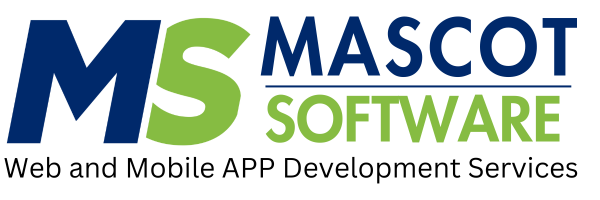
Why Use PHP and Bootstrap for Admin Panels?
PHP is a versatile server-side scripting language ideal for backend development. It provides robust features for handling data, interacting with databases, and processing server requests. Bootstrap, on the other hand, offers a sleek and responsive UI toolkit with ready-to-use components and styles, making it effortless to create aesthetically pleasing and functional admin interfaces. Combining PHP with Bootstrap allows developers to quickly prototype and build powerful admin panels that are both user-friendly and visually appealing.
Prerequisites
Before we begin, ensure you have the following:
- PHP installed on your development environment.
- Basic knowledge of HTML, CSS, and PHP.
- Bootstrap CSS and JavaScript files included in your project (you can link to them directly from a CDN).
Step-by-Step Guide
Step 1: Setting Up Your Project
Create a new directory for your project and initialize a basic file structure:
/admin-panel/ ├── assets/ │ ├── css/ │ │ └── style.css │ ├── js/ │ └── img/ ├── includes/ │ ├── header.php │ └── footer.php ├── index.php └── dashboard.php
Step 2: Integrating Bootstrap
Include Bootstrap CSS and JavaScript files in your project. You can add the following links to your header.php file:
<!-- Bootstrap CSS --> <link rel="stylesheet" href="https://stackpath.bootstrapcdn.com/bootstrap/4.5.2/css/bootstrap.min.css"> <!-- Bootstrap JS and dependencies --> <script src="https://code.jquery.com/jquery-3.5.1.slim.min.js"></script> <script src="https://cdn.jsdelivr.net/npm/@popperjs/core@2.5.4/dist/umd/popper.min.js"></script> <script src="https://stackpath.bootstrapcdn.com/bootstrap/4.5.2/js/bootstrap.min.js"></script>
Step 3: Creating the Admin Dashboard
dashboard.php
<?php include('includes/header.php'); ?> <div class="container mt-4"> <h2>Welcome to the Admin Dashboard</h2> <div class="row"> <div class="col-md-3"> <div class="list-group"> <a href="#" class="list-group-item list-group-item-action">Dashboard</a> <a href="#" class="list-group-item list-group-item-action">Posts</a> <a href="#" class="list-group-item list-group-item-action">Users</a> <a href="#" class="list-group-item list-group-item-action">Settings</a> </div> </div> <div class="col-md-9"> <div class="card"> <div class="card-header"> Admin Panel Overview </div> <div class="card-body"> <p class="card-text">Welcome to your customizable admin panel built with PHP and Bootstrap. You can manage various aspects of your application here.</p> </div> </div> </div> </div> </div> <?php include('includes/footer.php'); ?>
Step 4: Creating Dynamic Content
index.php
<?php include('includes/header.php'); ?> <div class="container mt-4"> <h2>Welcome to the Admin Panel</h2> <p>This is a simple example of dynamic content using PHP and Bootstrap.</p> </div> <?php include('includes/footer.php'); ?>
Step 5: Styling with Custom CSS
assets/css/style.css
css
Copy code
/* Add your custom styles here */
Step 6: Header and Footer Includes
header.php
<!DOCTYPE html> <html lang="en"> <head> <meta charset="UTF-8"> <meta name="viewport" content="width=device-width, initial-scale=1.0"> <title>Admin Panel</title> <link rel="stylesheet" href="assets/css/style.css"> <!-- Include Bootstrap CSS and JS --> <!-- Bootstrap CSS --> <link rel="stylesheet" href="https://stackpath.bootstrapcdn.com/bootstrap/4.5.2/css/bootstrap.min.css"> <!-- Bootstrap JS and dependencies --> <script src="https://code.jquery.com/jquery-3.5.1.slim.min.js"></script> <script src="https://cdn.jsdelivr.net/npm/@popperjs/core@2.5.4/dist/umd/popper.min.js"></script> <script src="https://stackpath.bootstrapcdn.com/bootstrap/4.5.2/js/bootstrap.min.js"></script> </head> <body> <nav class="navbar navbar-expand-lg navbar-dark bg-dark"> <a class="navbar-brand" href="#">Admin Panel</a> <button class="navbar-toggler" type="button" data-toggle="collapse" data-target="#navbarNav" aria-controls="navbarNav" aria-expanded="false" aria-label="Toggle navigation"> <span class="navbar-toggler-icon"></span> </button> <div class="collapse navbar-collapse" id="navbarNav"> <ul class="navbar-nav ml-auto"> <li class="nav-item"> <a class="nav-link" href="dashboard.php">Dashboard</a> </li> <li class="nav-item"> <a class="nav-link" href="index.php">Home</a> </li> <!-- Add more links as needed --> </ul> </div> </nav> <div class="container"> <div class="row mt-4"> <div class="col-md-12"> <!-- Content starts here -->
footer.php
<!-- Content ends here --> </div> </div> </div> <footer class="footer mt-auto py-3 bg-light"> <div class="container text-center"> <span class="text-muted">Copyright © <?php echo date('Y'); ?> Admin Panel. All rights reserved.</span> </div> </footer> </body> </html>
Conclusion
In this blog post, we have explored how to create a customizable admin panel using PHP and Bootstrap. We started by setting up our project structure and integrating Bootstrap for responsive design. Then, we created dynamic content pages such as the dashboard and home page using PHP includes for header and footer sections. This approach allows you to easily add more features and pages to your admin panel as your application grows. By leveraging the power of PHP for server-side logic and Bootstrap for front-end styling, you can build robust and user-friendly admin panels tailored to your specific needs. Start building your own customizable admin panel today and streamline the management of your web applications!






